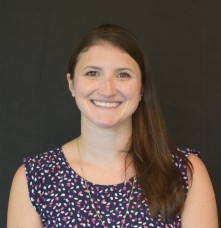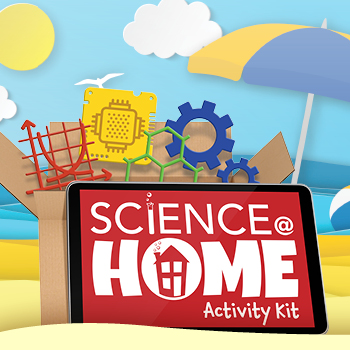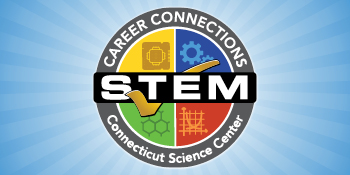Here at the Connecticut Science Center, we are continuing our exploration of ancestry. This time, the journey takes us (as many of my favorites do) to a good book! In previous posts, we have taken a look at the science of direct-to-consumer ancestry tests, and the notable lack of diversity that exists within the sample populations used to make comparisons, assign ancestry, and even conduct research that will inform the future of healthcare.
 DNA is no longer just in a lab. The double helix has wound its way into the heart of society, which brings us to Alondra Nelson’s book, “The Social Life of DNA: Race, Reparations, and Reconciliation After the Genome.” Focusing on “the gray area, the nuance and complexity of genetic ancestry testing,” Nelson dives into the “uses and abuses of genetic claims.”
DNA is no longer just in a lab. The double helix has wound its way into the heart of society, which brings us to Alondra Nelson’s book, “The Social Life of DNA: Race, Reparations, and Reconciliation After the Genome.” Focusing on “the gray area, the nuance and complexity of genetic ancestry testing,” Nelson dives into the “uses and abuses of genetic claims.”
As the author describes, there are both good and bad sides to the growing social power of DNA. It is seen as the “final arbiter of truth of identity,” and because of that, has allowed people to seek reconciliation. However, that same social power can cause genetic results to be misrepresented.
First, we examine the overwhelmingly positive side of this coin; the revolutionary way that DNA can be used to help others find missing pieces. Nelson opens the very first chapter of her book with a window into one of the most notable examples of this, the work of geneticist Mary-Claire King that reunited “Las Abuelas de Plaza de Mayo” with their lost families. In Argentina, citizens found themselves thrust into a military dictatorship that lasted from 1976 until 1983. This regime ruled by fear, abducting and torturing any that opposed them. Families were torn apart, some of which may never know what happened to their lost loved ones. According to Nelson, “estimates of the number of desaparecidos or ‘disappeared’ range up to thirty thousand people.” Some of the imprisoned were pregnant women, whose children were taken away from their mothers and given to allies of the dictatorship. These children have become known as the “misappropriated babies of the Dirty War.” In an attempt to find these children, their grandparents are utilizing genetics.
 Las Abuelas needed “indisputable proof” that a grandmother and grandchild were related. Geneticist Mary-Claire King used mitochondrial DNA to prove just that. Most of our DNA lies within the nucleus of our cells, half of which we have received from one parent, and half from the other. However, in the powerhouse of our cells, the mighty mitochondria, we carry DNA that is passed unchanged from mothers to their children. That means that ALL maternal relatives, male OR female, would have the same mitochondrial DNA sequence. This was life-changing for Las Abuelas, since it meant that grandmothers could be matched to biological grandchildren. The same mitochondrial DNA would have passed from a grandmother to her daughter, and then to her children. In this case, “DNA analysis was put to political and humanitarian uses that were previously unimaginable.” These efforts have resulted in the reunion of more than 100 children with their families.
Las Abuelas needed “indisputable proof” that a grandmother and grandchild were related. Geneticist Mary-Claire King used mitochondrial DNA to prove just that. Most of our DNA lies within the nucleus of our cells, half of which we have received from one parent, and half from the other. However, in the powerhouse of our cells, the mighty mitochondria, we carry DNA that is passed unchanged from mothers to their children. That means that ALL maternal relatives, male OR female, would have the same mitochondrial DNA sequence. This was life-changing for Las Abuelas, since it meant that grandmothers could be matched to biological grandchildren. The same mitochondrial DNA would have passed from a grandmother to her daughter, and then to her children. In this case, “DNA analysis was put to political and humanitarian uses that were previously unimaginable.” These efforts have resulted in the reunion of more than 100 children with their families.
DNA analysis has also been used to dispel dangerous racial misconceptions and overgeneralizations, as is the case with the African Burial Ground remains. Unearthed in Manhattan in the early 1990s, these graves dated back to “at least the late 1600s.” The remains in this segregated cemetery were initially grossly mistreated and disrespected, as well as used in a case of “biological racing,” measuring the bones in an attempt to determine race. However, when the project was taken over by a lab at Howard University, the game changed. They used genetic techniques to analyze the mitochondrial DNA, or mtDNA, (mentioned above) as well as Y Chromosome DNA, or Y-DNA, of these ancient samples. Like mtDNA, Y-DNA passes unchanged along a paternal line, from fathers to sons. Dr. Rick Kittles, who would later go on to co-found African Ancestry, was able to link individuals from the African Burial Ground with specific ethnic groups. This endeavor led him to the realization that existing genetic databases were sorely lacking in African samples, sending him on a course that would change his own future and the future of ancestry (more on that below).
However, DNA alone is not the be all, end all. As Nelson puts it, “even a molecule as elegantly complex as DNA cannot possibly fulfill all these expectations,” but because of its social power, it is easy to see it that way. In a phenomenon known as “DNA spillover” our experiences with one area of genetics, such as forensic analysis, inform our understanding of its other uses. For example, our use of DNA to convict or exonerate individuals of a crime can cause us to have complete faith in generalized ancestry results. Because of this, “developments in contemporary DNA analysis, especially genetic ancestry testing, <threaten> to retread the tragic path of scientific racism.” The more ubiquitous DNA becomes and the more we develop a sense of genetic literacy, the better able we will be to evaluate its use and misuse.
I would be remiss if I didn’t shine a particular light on a thread that Nelson weaves throughout many of her chapters. Over the course of the book, she hails the work of a revolutionary organization, one that is helping to create a bridge for those of African descent, who have hit a “brick wall” in their genealogical research due to the lack of records prior to 1870. Individuals whose pasts were literally erased, turn to genetic genealogy to try to find the missing pieces. However as we have discussed in the posts linked above, reference databases used in these tests are incomplete, yielding overly generalized results. For example, West Africa isn’t necessarily an illuminating result for an individual of African descent. Here is where the groundbreaking work of Dr. Rick Kittles and Dr. Gina Paige comes in. With the largest and most comprehensive database of African DNA samples, African Ancestry, co-founded by Dr. Kittles & Dr. Paige, can determine specific countries and ethnic groups of origin with unprecedented accuracy. Addressing the issue Dr. Kittles identified years previously while working with the African Burial Ground project, they have truly built a bridge like no other.
The first of its kind, this ancestry company is Black owned, Black funded, and employs Black geneticists.
Nelson references many conversations with Dr. Rick Kittles throughout the book, describing how he sees his company’s work as a way to “bind the broken limbs of family trees” and “bring African Americans closer to Africa.”
The Connecticut Science Center was lucky enough to have Dr. Gina Paige join us for a Straight Talk virtual event entitled, “The African Ancestry Experience.” In her presentation, Dr. Paige described how African Ancestry uses mitochondrial and Y-DNA to trace maternal and paternal lineages, and even helped a member of our staff participate in a powerful, live, ancestry reveal. Her company truly does build bridges for so many more people to understand their roots.
The social presence of DNA can be seen all around us. I encourage you to dive deeper into an area that interests you to see what DNA can, and also cannot tell you. I will leave you with one last thought from Alondra Nelson from her book, which is still as poignant today as the day she wrote it. “We use DNA as a portal to the past that yields insight for the present and the future. We use DNA to shine a light on social trauma and to show how historic injustices continue to resonate today.” Let’s hope we never stop.




